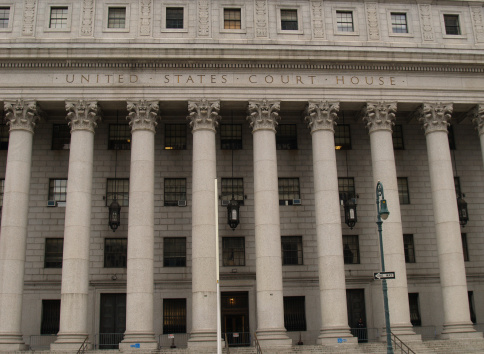
If the Great Recession was caused by fraud, the failure to prosecute those responsible is an egregious failure.
Five years have passed since the onset of what is sometimes called the Great Recession. While the economy has slowly improved, there are still millions of Americans leading lives of quiet desperation: without jobs, without resources, without hope.
Who was to blame? Was it simply a result of negligence, of the kind of inordinate risk-taking commonly called a “bubble,” of an imprudent but innocent failure to maintain adequate reserves for a rainy day? Or was it the result, at least in part, of fraudulent practices, of dubious mortgages portrayed as sound risks and packaged into ever-more-esoteric financial instruments, the fundamental weaknesses of which were intentionally obscured?
If it was the former – if the recession was due, at worst, to a lack of caution – then the criminal law has no role to play in the aftermath. For, in all but a few circumstances (not here relevant), the fierce and fiery weapon called criminal prosecution is directed at intentional misconduct, and nothing less. If the Great Recession was in no part the handiwork of intentionally fraudulent practices by high-level executives, then to prosecute such executives criminally would be “scapegoating” of the most shallow and despicable kind.
But if, by contrast, the Great Recession was in material part the product of intentional fraud, the failure to prosecute those responsible must be judged one of the more egregious failures of the criminal justice system in many years. Indeed, it would stand in striking contrast to the increased success that federal prosecutors have had over the past 50 years or so in bringing to justice even the highest level figures who orchestrated mammoth frauds. Thus, in the 1970’s, in the aftermath of the “junk bond” bubble that, in many ways, was a precursor of the more recent bubble in mortgage-backed securities, the progenitors of the fraud were all successfully prosecuted, right up to Michael Milken. Again, in the 1980’s, the so-called “savings-and-loan crisis,” which again had some eerie parallels to more recent events, resulted in the successful criminal prosecution of more than 800 individuals, right up to Charles Keating. And, again, the widespread accounting frauds of the 1990’s, most vividly represented by Enron and WorldCom, led directly to the successful prosecution of such previously respected CEOs as Jeffrey Skilling and Bernie Ebbers.
In striking contrast with these past prosecutions, not a single high-level executive has been successfully prosecuted in connection with the recent financial crisis, and given the fact that most of the relevant criminal provisions are governed by a five-year statute of limitations, it appears likely that none will be. It may not be too soon, therefore, to ask why.
One possibility, already mentioned, is that no fraud was committed. This possibility should not be discounted. Every case is different, and I, for one, have no opinion as to whether criminal fraud was committed in any given instance.
But the stated opinion of those government entities asked to examine the financial crisis overall is not that no fraud was committed. Quite the contrary. For example, the Financial Crisis Inquiry Commission, in its final report, uses variants of the word “fraud” no fewer than 157 times in describing what led to the crisis, concluding that there was a “systemic breakdown,” not just in accountability, but also in ethical behavior. As the Commission found, the signs of fraud were everywhere to be seen, with the number of reports of suspected mortgage fraud rising 20-fold between 1998 and 2005 and then doubling again in the next four years. As early as 2004, FBI Assistant Director Chris Swecker was publicly warning of the “pervasive problem” of mortgage fraud, driven by the voracious demand for mortgage-backed securities. Similar warnings, many from within the financial community, were disregarded, not because they were viewed as inaccurate, but because, as one high-level banker put it, “A decision was made that ‘We’re going to have to hold our nose and start buying the product if we want to stay in business.’”
Without multiplying examples, the point is that, in the aftermath of the financial crisis, the prevailing view of many government officials (as well as others) was that the crisis was in material respects the product of intentional fraud. In a nutshell, the fraud, they argued, was a simple one. Subprime mortgages (i.e., mortgages of dubious creditworthiness) increasingly provided the chief collateral for highly-leveraged securities that were marketed as triple-A (i.e., securities of very low risk). How could this transformation of a sow’s ear into a silk purse be accomplished unless someone dissembled along the way?




